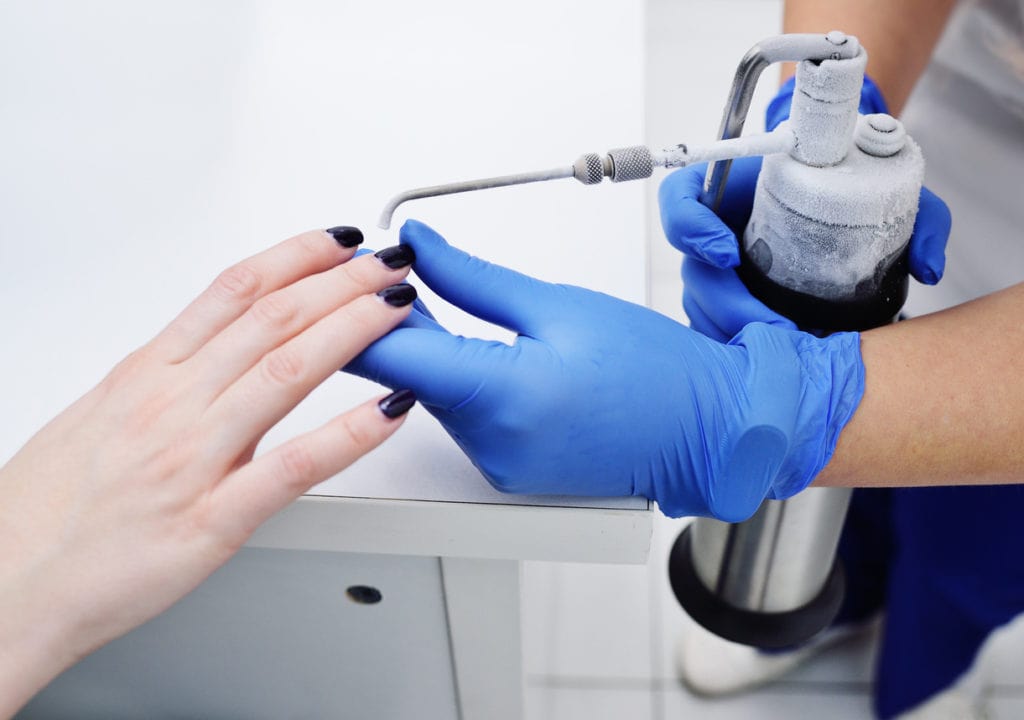
Warts can be an annoying and sometimes embarrassing skin issue that affects people of all ages. These small, rough growths are caused by the human papillomavirus (HPV) and can appear on various parts of the body. While there are many treatments available, cryotherapy has emerged as one of the most effective methods for removing warts quickly and efficiently. But how effective is cryotherapy for warts? Let’s dive into the details to understand why this treatment is gaining popularity.
What Is Cryotherapy?
Cryotherapy, also known as cryosurgery, is a medical procedure that uses extreme cold to destroy abnormal tissues. In the context of warts, liquid nitrogen is commonly applied to freeze the wart, which causes the skin cells to die and fall off. The procedure is minimally invasive and is typically performed in a dermatologist’s office.
The Science Behind Cryotherapy
The effectiveness of cryotherapy lies in its ability to freeze and destroy the infected tissue. Liquid nitrogen is applied to the wart, reaching temperatures as low as -196°C (-320.8°F). This extreme cold creates ice crystals inside the wart cells, leading to cellular damage and eventual death of the targeted tissue. Over time, the body naturally sheds the dead skin, leaving behind healthy tissue.
How Effective Is Cryotherapy for Warts?
Cryotherapy is considered highly effective for treating warts, especially common warts and plantar warts. Studies suggest that success rates can range from 50% to 70% after a single session, with higher rates achievable through multiple treatments. Factors such as the size, location, and duration of the wart can influence the treatment’s success.
Key Benefits of Cryotherapy for Warts:
- Quick Procedure: Most sessions take only 10-15 minutes.
- Minimal Downtime: Patients can usually resume normal activities immediately.
- Non-Invasive: Unlike surgical options, cryotherapy doesn’t require incisions.
- Safe for Most Patients: Suitable for people of all ages, including children.
What to Expect During the Procedure
The process of cryotherapy for warts is straightforward. Here’s a step-by-step overview:
- Consultation: Your dermatologist will examine the wart and determine if cryotherapy is the right treatment for you.
- Preparation: The area around the wart is cleaned and, in some cases, numbed with a local anesthetic to minimize discomfort.
- Application: Liquid nitrogen is applied directly to the wart using a cotton swab or spray device.
- Post-Treatment Care: The treated area may form a blister, which is a normal part of the healing process. The blister typically dries up and falls off within 1-2 weeks.
Post-Treatment Care and Tips
Proper aftercare is essential to ensure successful healing and prevent recurrence. Follow these tips:
- Keep the Area Clean: Wash the treated area gently with soap and water.
- Avoid Picking: Do not pick at the blister or scab as this can lead to scarring or infection.
- Apply Antibacterial Ointment: Use an over-the-counter antibiotic cream to reduce the risk of infection.
- Protect the Skin: Avoid excessive sun exposure and use sunscreen to prevent discoloration.
Are There Any Risks?
While cryotherapy is generally safe, it may cause some side effects, including:
- Redness and swelling around the treated area.
- Mild pain or discomfort during and after the procedure.
- Temporary skin discoloration, which usually resolves over time.
It’s important to discuss potential risks with your dermatologist to ensure you’re well-informed.
Comparing Cryotherapy to Other Treatments
When considering wart removal, you might wonder how cryotherapy stacks up against other treatments. Here’s a quick comparison:
| Treatment | Effectiveness | Pros | Cons |
|---|---|---|---|
| Cryotherapy | High (50%-70%) | Quick, non-invasive | Requires multiple sessions |
| Topical Agents | Moderate | Easy to apply at home | Takes weeks to months |
| Surgical Removal | Very High | Immediate results | Invasive, risk of scarring |
| Laser Therapy | High | Precise, minimal recurrence | Expensive, requires specialist |
Addressing Common Concerns
Does Cryotherapy Hurt? The sensation during cryotherapy can vary from person to person. Many describe it as a stinging or burning feeling that subsides quickly. For individuals with low pain tolerance, a numbing agent can be applied beforehand.
How Many Sessions Are Needed? While some patients achieve clear skin in just one session, others may require 2-3 treatments spaced several weeks apart. The number of sessions depends on the wart’s size and resistance.
Is It Suitable for Everyone? Cryotherapy is safe for most people but may not be recommended for individuals with certain medical conditions, such as diabetes or circulation problems. Always consult your healthcare provider to determine the best course of action.
Conclusion
Cryotherapy for warts is a highly effective treatment option that offers quick results with minimal downtime. Whether you’re dealing with a stubborn plantar wart or an unsightly growth on your hand, this method can help you achieve clear skin in just one session. By understanding the process, benefits, and aftercare, you can make an informed decision and take the first step toward healthy, blemish-free skin.
If you’ve been asking yourself, “How effective is cryotherapy for warts?” the answer lies in its proven track record and high success rates. Schedule a consultation with a dermatologist today to explore whether this treatment is right for you.